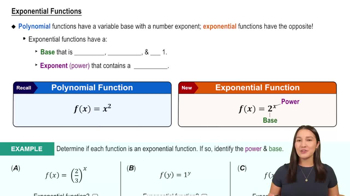More composite functions Let ƒ(x) = | x | , g(x)= x² - 4 , F(x) = √x , G(x) = (1)/(x-2) Determine the following composite functions and give their domains.
G o G
 Verified step by step guidance
Verified step by step guidance Verified video answer for a similar problem:
Verified video answer for a similar problem:



 5:56m
5:56mMaster Adding & Subtracting Functions with a bite sized video explanation from Patrick
Start learning